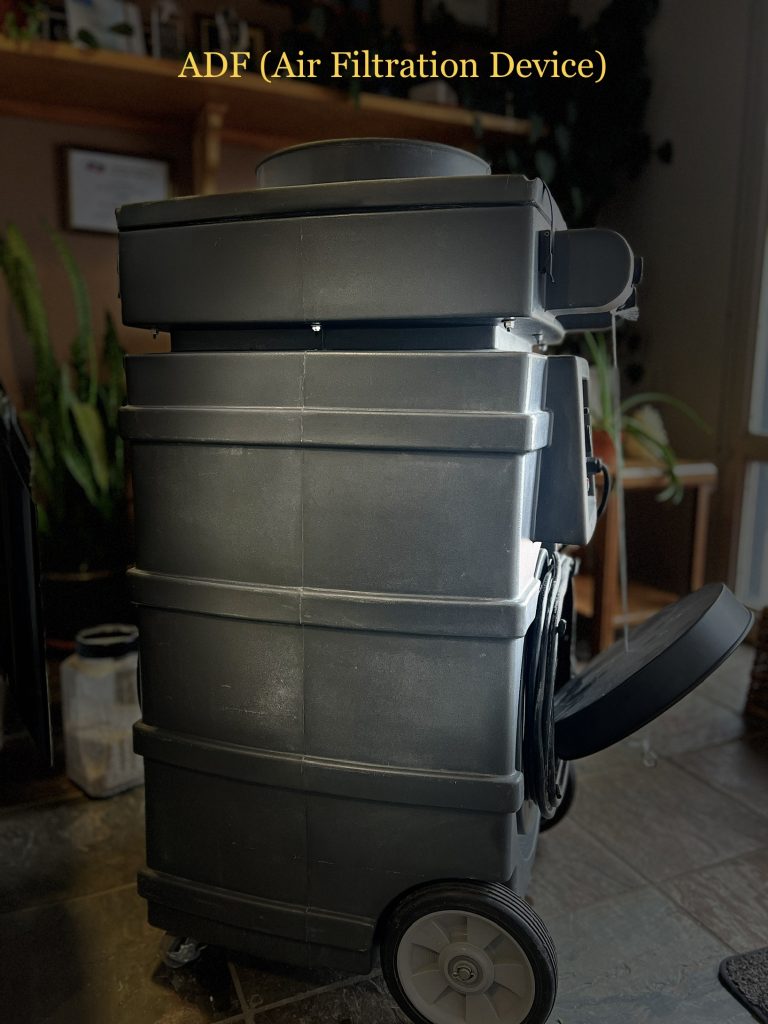Air Filtration Devices (AFD) also known as air scrubbers are essential for water damage and fire damage restoration work to comply with OSHA regulations. AFDs provide a way to remove hazardous particles from the air, such as smoke, soot, ash, and other airborne contaminants resulting from water or fire damage. This helps protect the health of people living or working in the area and ensures that the property is safe and habitable.

OSHA Requirements for Using AFD During Restorations
The Occupational Safety and Health Administration (OSHA) has a set of standards that must be followed to ensure the safety of workers and occupants who may be affected by hazardous atmospheres resulting from water or fire damage. In particular, OSHA requires that employers have risk assessment and control measures to protect workers and occupants of the property from hazardous atmospheres.
The filters used in AFD air filtration devices are incredibly efficient at trapping and eliminating airborne contaminants. They are capable of capturing particles as small as 0.3 microns.
One of the ways to meet OSHA requires the use of an AFD. This device filters out hazardous particles from the air, such as smoke, soot, ash, and other airborne contaminants. The AFD can reduce the level of hazardous particles in the air to a safe level suitable for workers and occupants.
Benefits of Using AFD
Using an AFD during water and fire damage restoration work has several benefits:
- It helps protect the health of workers and occupants in the area by reducing the level of hazardous particles in the air.
- It helps ensure the work is done in compliance with OSHA regulations.
- It helps protect the property from further damage caused by hazardous particles, as these particles can cause additional damage to the structure if left unchecked.
AFD air filtration devices come in a variety of CFM sizes and can be used in both residential and commercial settings. Cubic Feet Per Minute (CFM) is a measurement of airflow volume, determined by how many cubic feet of air pass by a stationary point in one minute.
AFD can be used in a wide range of water and fire damage restoration work, from cleaning up after floods or fires to demolishing walls and ceilings. AFDs can also be used in carpentry and demolition work, as well as painting and other remediation work.
In conclusion, using AFD Air Filtration Devices during water damage and fire damage restoration is essential to ensure the safety of workers and occupants and to comply with OSHA regulations. AFDs can remove hazardous particles from the air, such as smoke, soot, and ash, and reduce the level of these particles to a safe level. Using an AFD during restorations can help protect the health of workers and occupants, as well as the structure of the property.
References:
- Occupational Safety and Health Administration. (2021).
